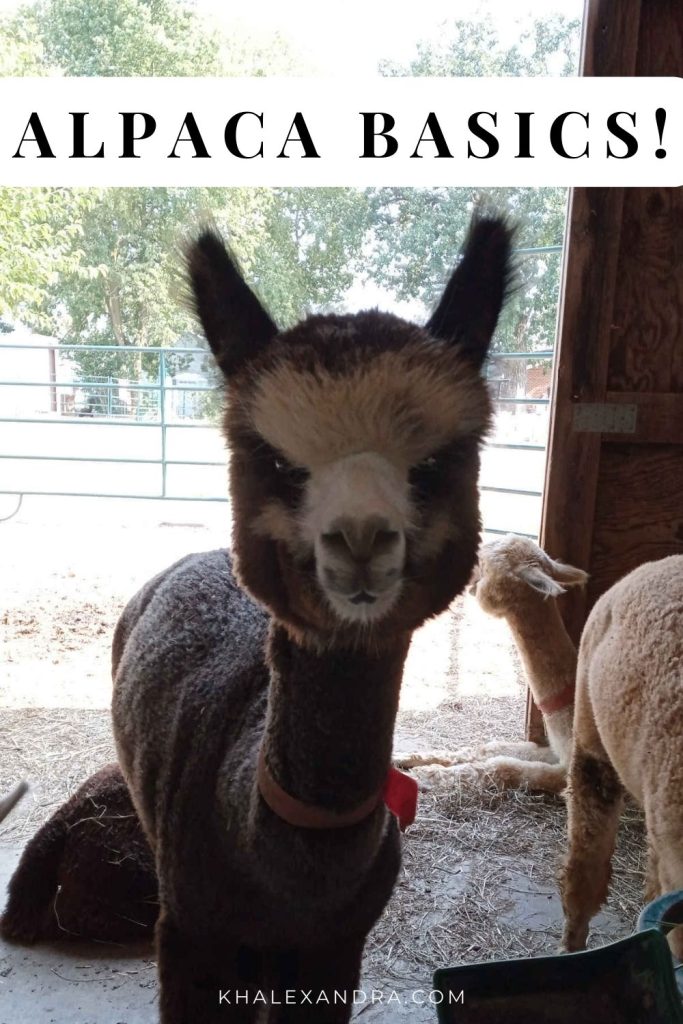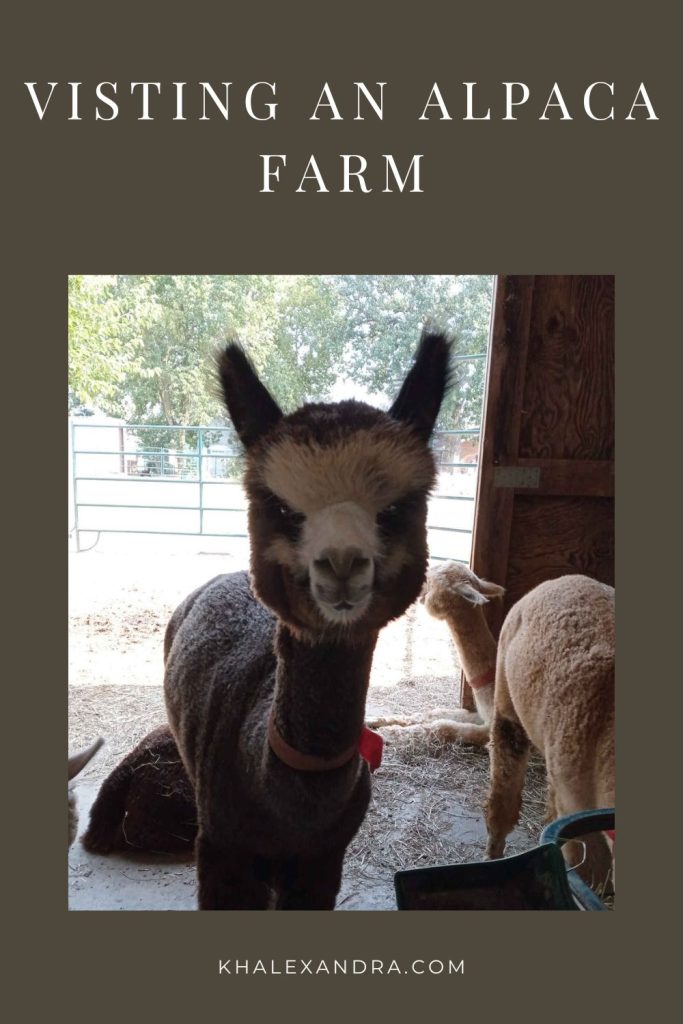Visiting an Alpaca Farm
This post may contain affiliate links, which means I'll receive a small commission if you purchase through my links, at no extra cost to you. Please read full disclosure for more information. Your support is appreciated!.
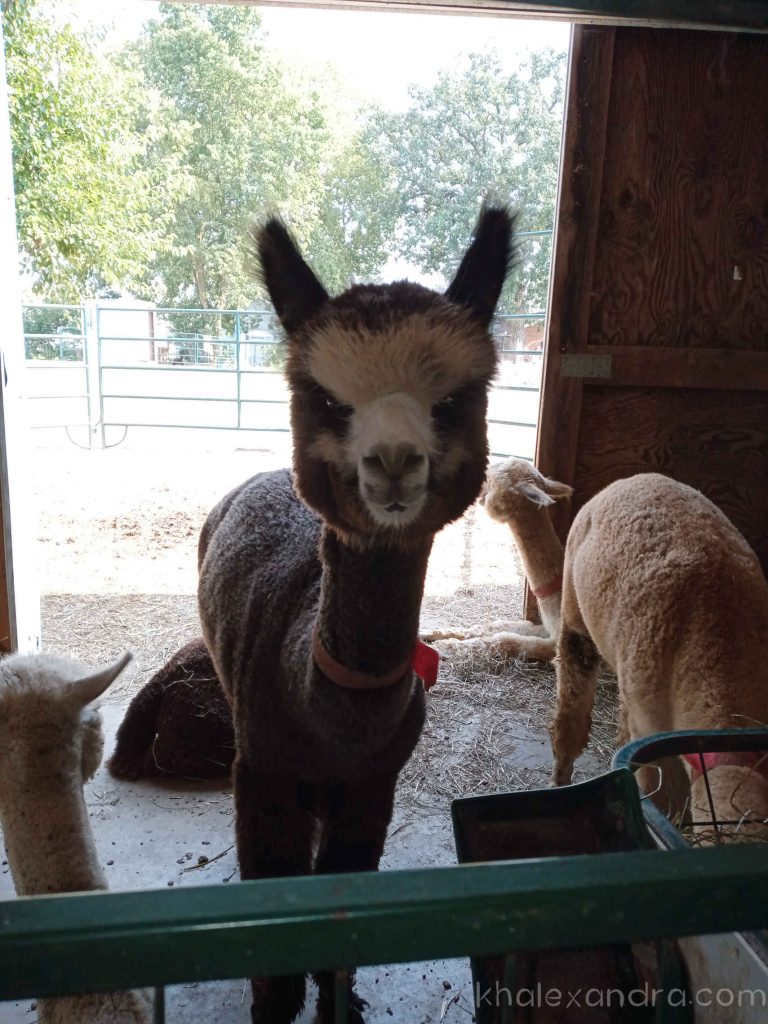
One place I regretted not visiting while in Japan was a famous Alpaca farm in the Nasu area in Tochigi.
Alpacas are very beloved in Japan. It is possible to see an alpaca being walked down the street (sometimes dressed in a tuxedo) even in the large city of Tokyo! Alpacas can be house trained and are known to be friendly with dogs and cats. This might be the reason they are so popular in Japan.
In Japan, alpacas can also be part of your wedding ceremony. If you are interested in getting married or having your vows renewed in Japan, and having an alpaca be your witness, contact the Hotel Epinard in Nasu.
Even though I did not get to visit alpacas in Japan (or have them witness my wedding vows!), I went to a family alpaca farm in the midwest during a weekend festival upon return, where I learned much more about them.
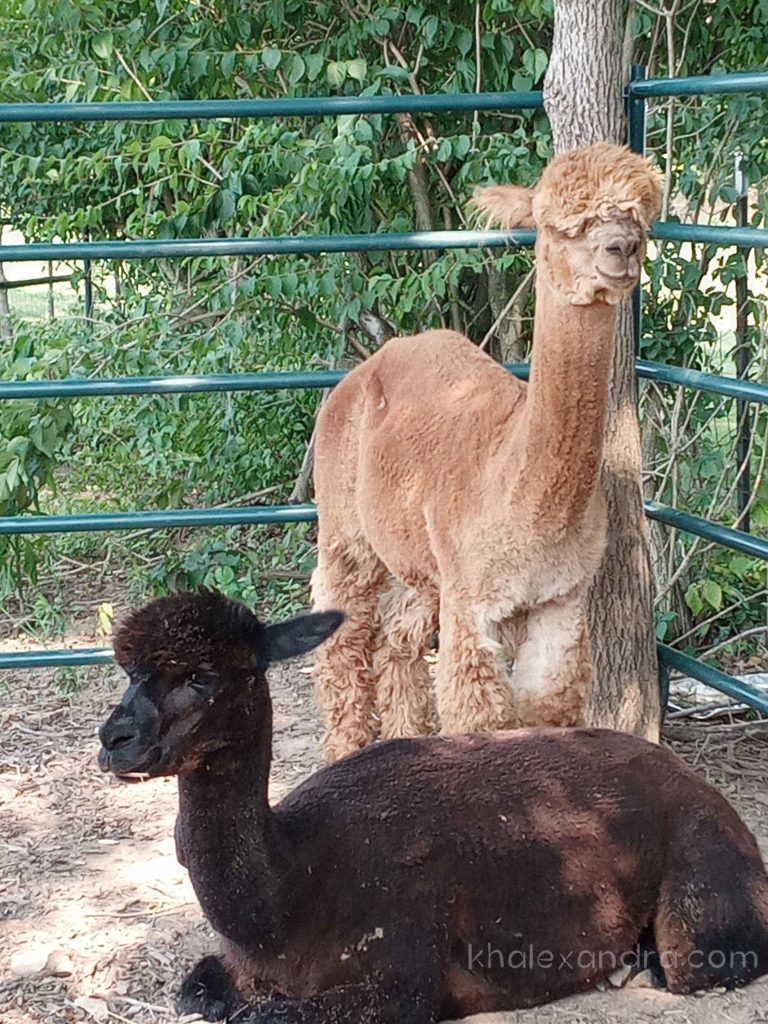
The domestication of alpacas occurred in the Andes Mountain area of Peru, where they are believed to have originated from the wild vicuna. Today, alpacas are found and enjoyed all over the world. They are still a large part of Peruvian culture and livelihood, today, and Peru is still home to the largest amount of alpacas anywhere on earth.
Some Alpaca Facts
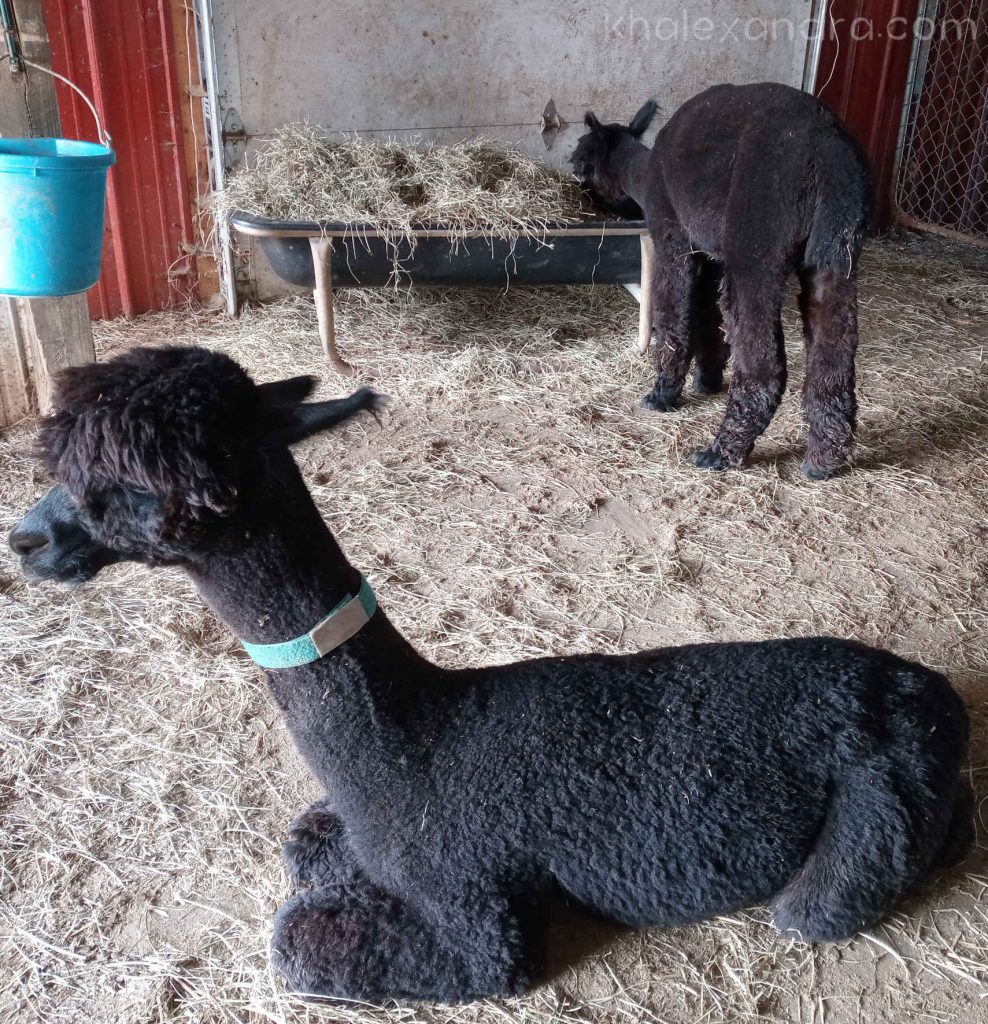
Although related to camels and llamas and a member of the Camelid family, alpacas (vicugña pacos) are smaller than llamas.
Alpaca feet have soft pads on the bottom and soft wool that is transformed into fleece.
There are only two breeds of alpaca. At this farm, the only breed was the Huacaya breed.
Over 90% of all alpacas are of the Huacaya breed. The other approximately 10% of alpacas are of the Suri breed. The Suri breed of alpaca has longer fibers that hang and the Huacaya are more fuzzy and fluffy looking.
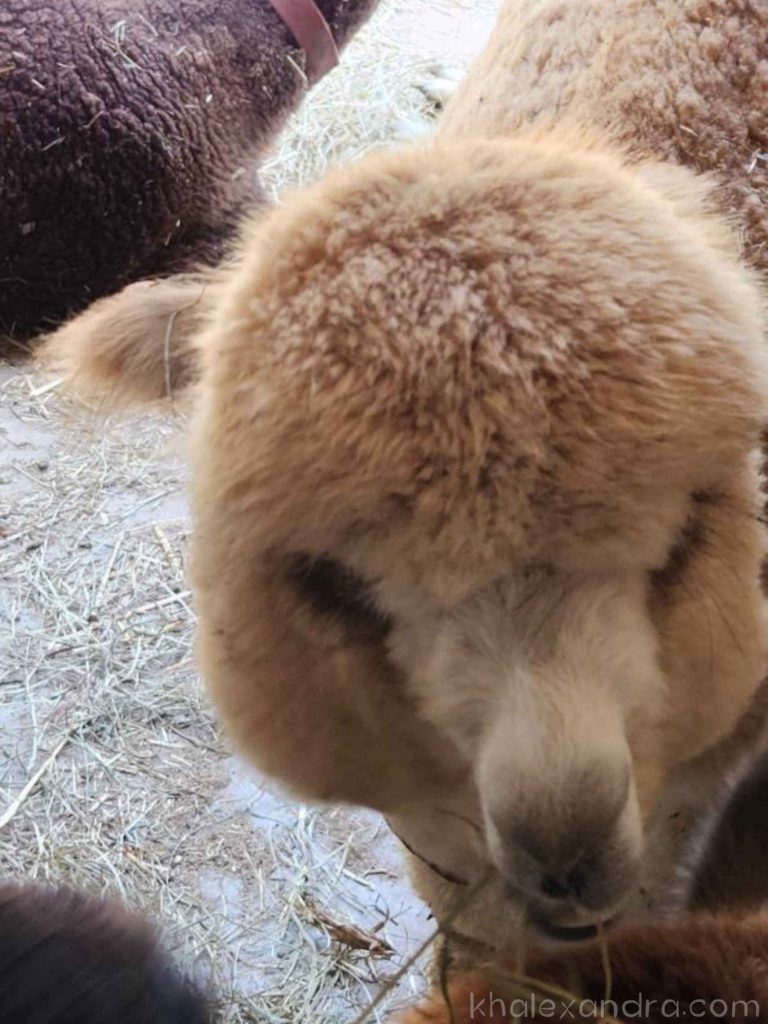
Alpaca wool or fiber is available in many colors, making it great for socks, coats, blankets, and other clothing. This alpaca fleece is even warmer than sheep’s wool, and luxuriously soft. At the farm we visited, the alpacas were many different colors.
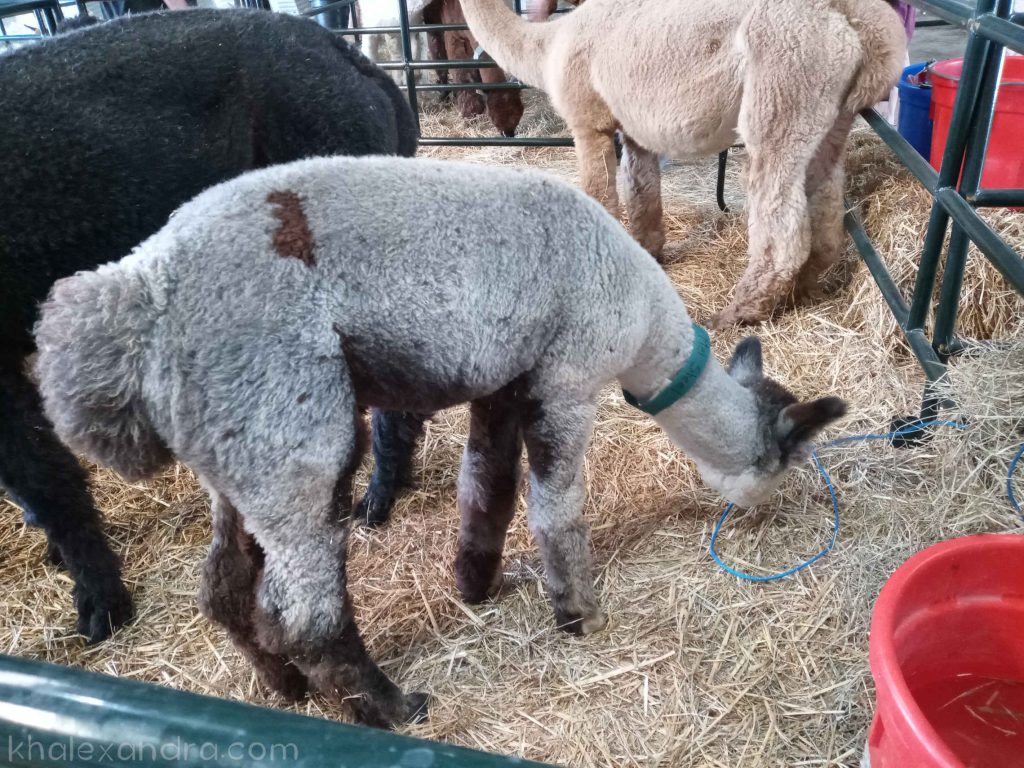
Friends warned me to avoid irritating the alpacas, because like llamas they have the tendency to spit when angry. However, I did not see this happen once and in fact, the alpacas at the farm we visited were friendly and laid back.
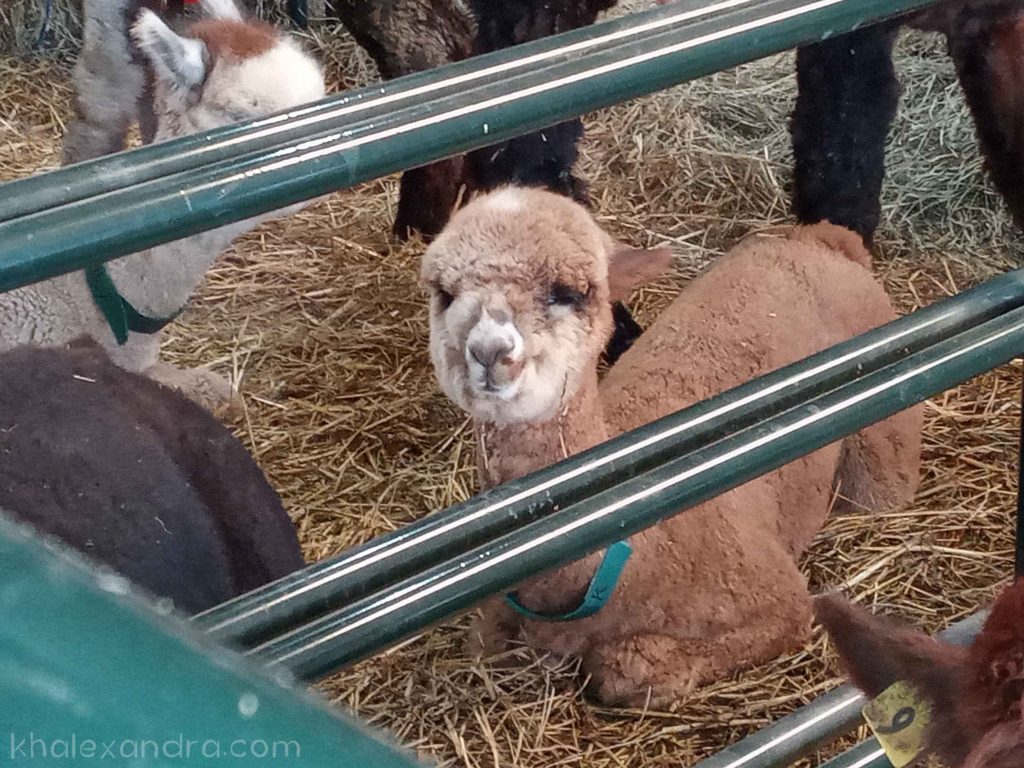
Although they may be easier to scare, they seem a little less irritable than their bigger llama relatives.
Alpacas tend to “mow” down grass from the top, instead of pulling it out by the roots, which can be beneficial to your landscaping.
Crias
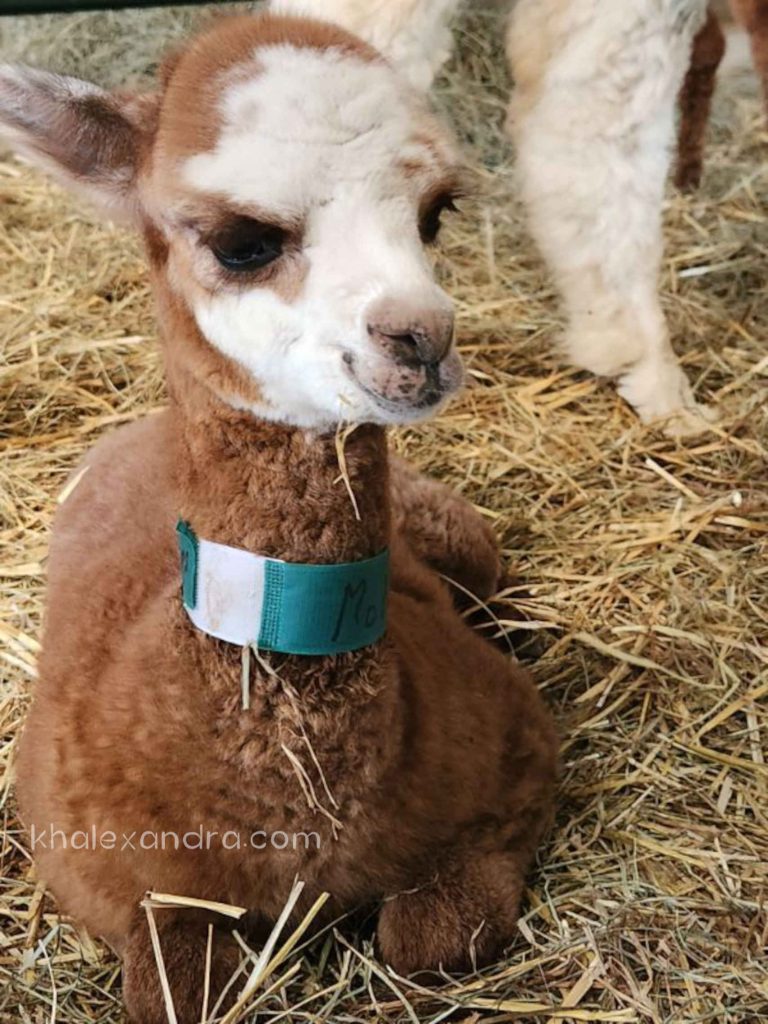
Baby alpacas are called “crias” and are easily cared for.
Alpaca mothers do not need help to deliver, and the crias can walk and take milk within a couple of hours.
Alpacas give birth once per year as they carry their crias for about 11 months. They deliver in the spring or summer and usually in the morning time.
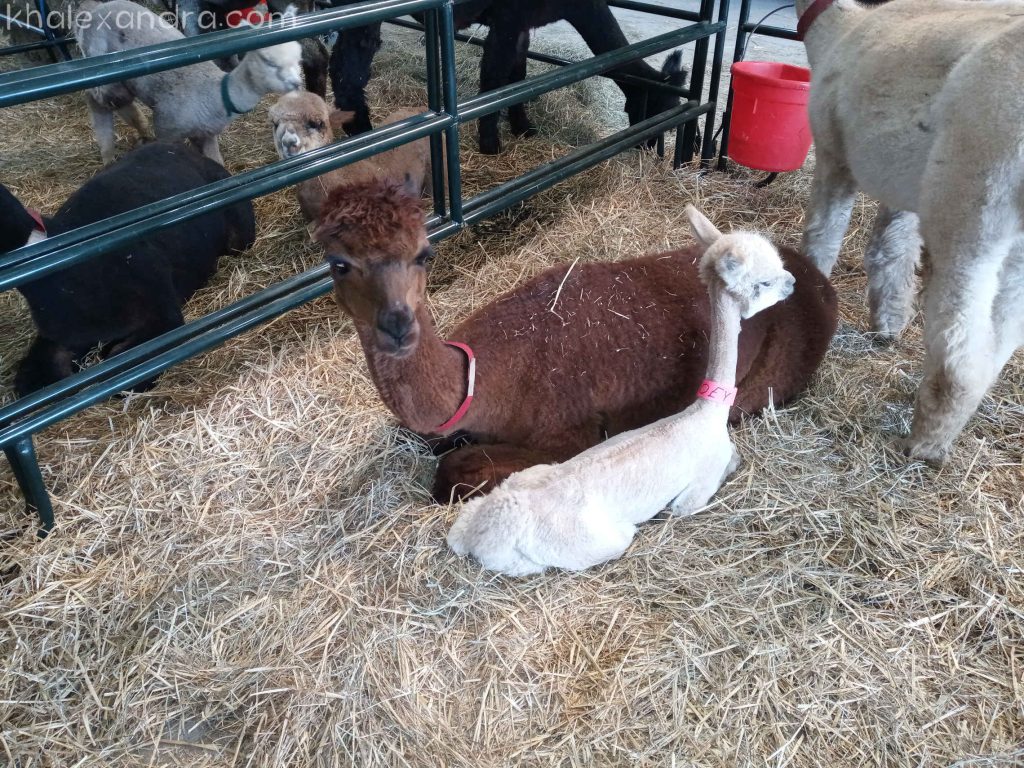
The crias weigh around 10-20 lbs when they are born and gain around ¼ to ½ lb per day.
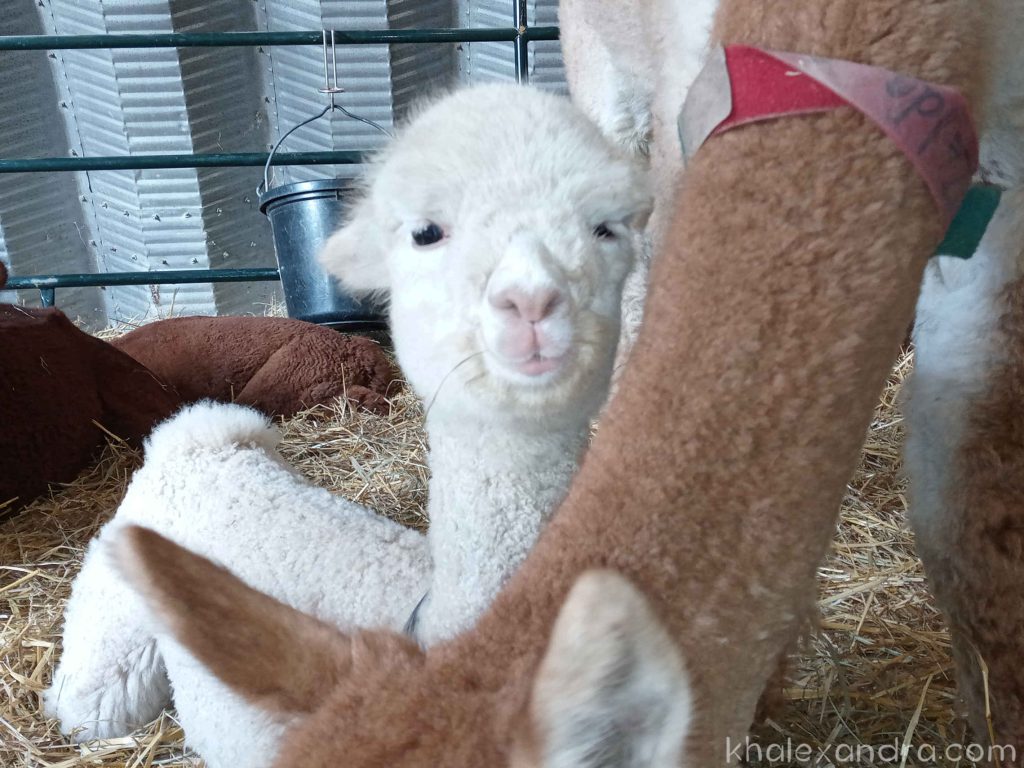
Price and Care
The cost of alpacas, as of 2023, is generally around $3500 upwards, but the males at this farm cost over $50,000. Sometimes you can adopt pet alpacas for less than $1000 but this is rare to find (as people are not in a hurry to sell their alpacas!).
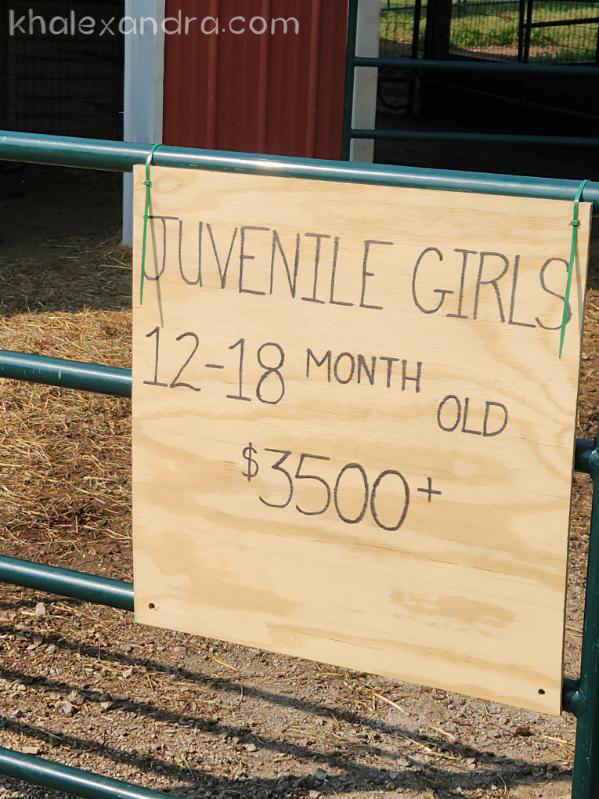
Buying an alpaca also means having grass, grains, and hay to keep them fed, so a space for them to graze would be very beneficial.
Alpaca Fiber
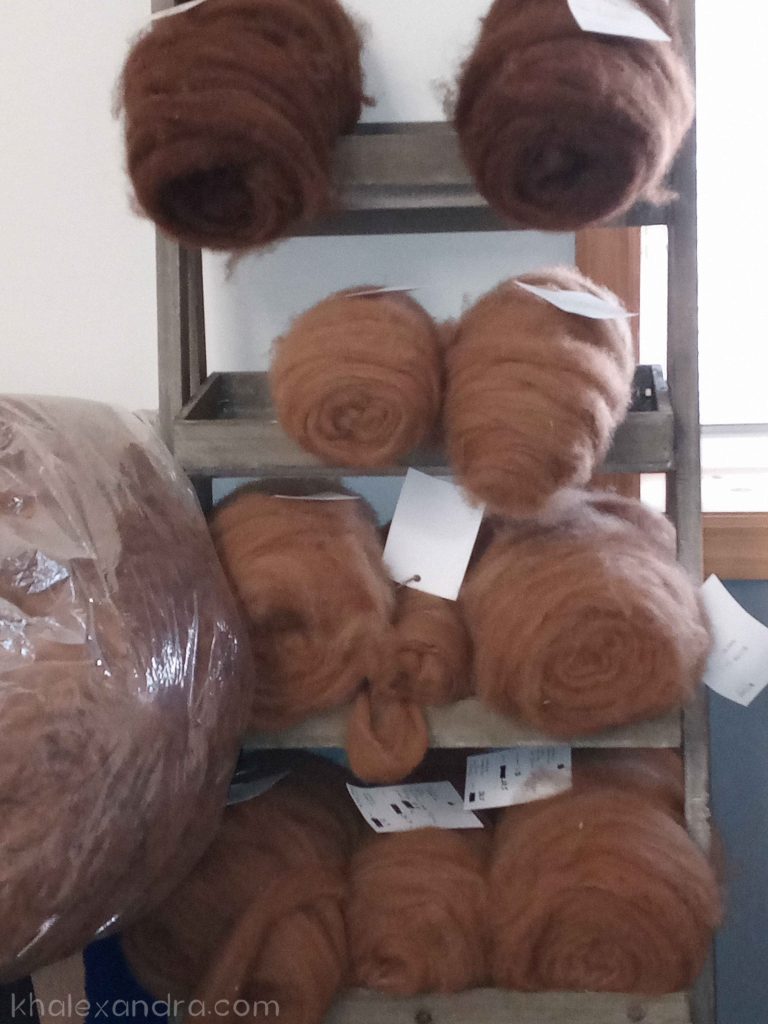
The soft alpaca fiber has hypoallergenic properties and is suitable for making clothing that provides warmth. To me, the wool seemed softer than sheep’s wool. Alpaca wool may be less itchy than sheep’s wool, as well.
In fact, Alpaca wool is very strong, second only to mohair fiber.
Because of the strength of the fiber, it is warmer than other wools.
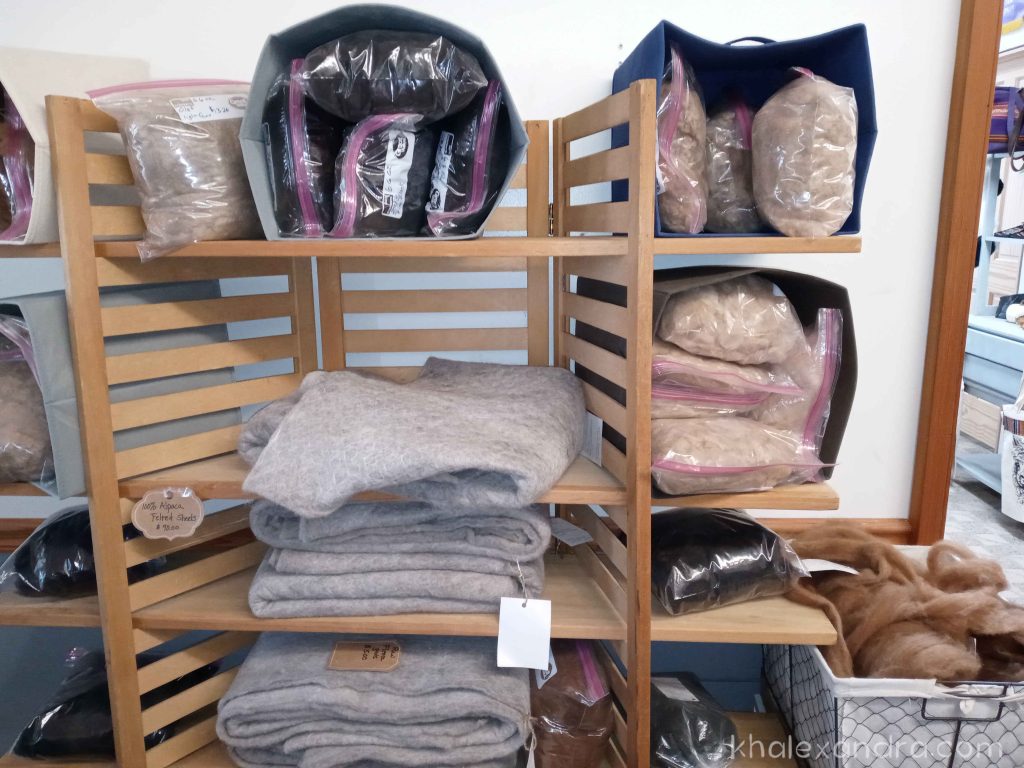
Spinning the Alpaca Wool into Yarn
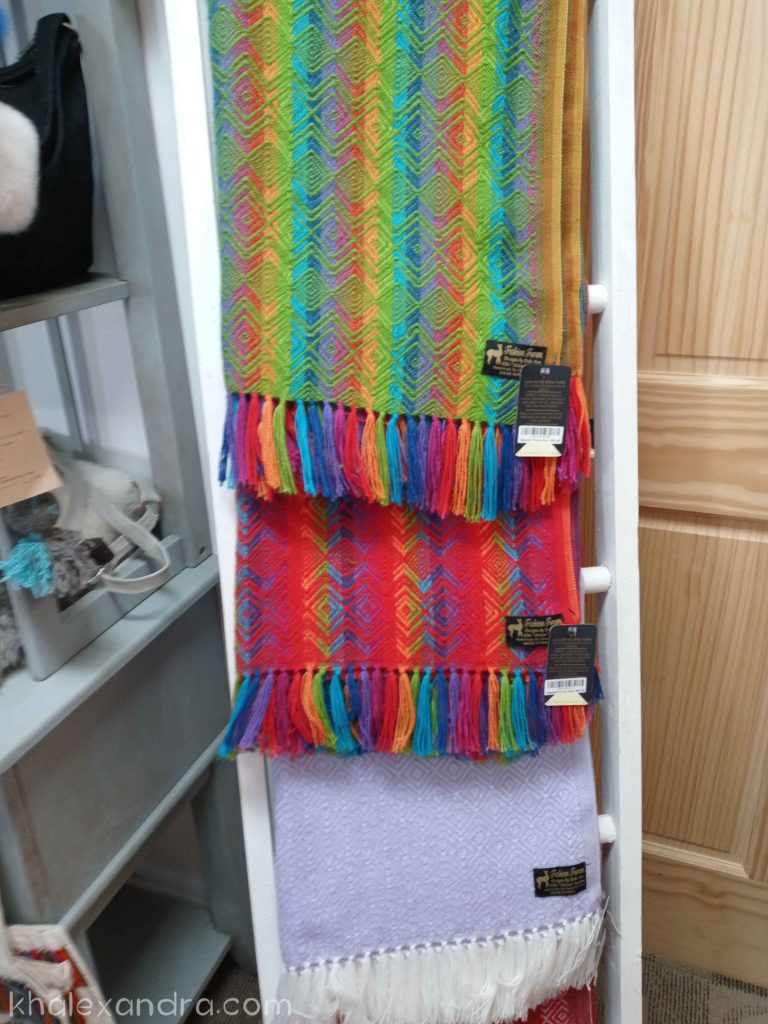
Selling yarn from alpaca fiber could be a great business idea, as could selling the fiber itself.
It is possible to buy alpaca fiber on its own, but you may need to soak it in the washing machine to clean it.
I have heard that alpaca fiber is harder to felt than sheep’s wool, but you still need to be careful not to felt it by accident while washing.
To spin the alpaca fiber into yarn on your own, you will need some tools.
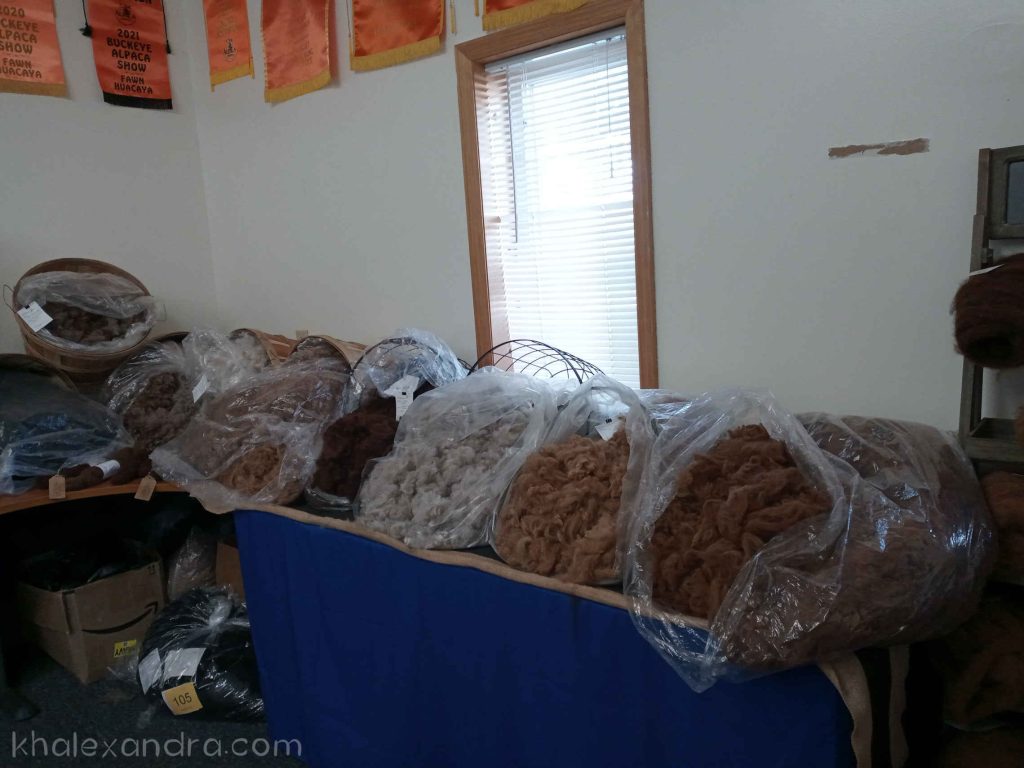
After cleaning it, you must fluff or separate the fiber. You can fluff fiber with your hands, but with less prepared (very fresh) fiber, you will benefit by having carders (hand cards), which are like brushes:
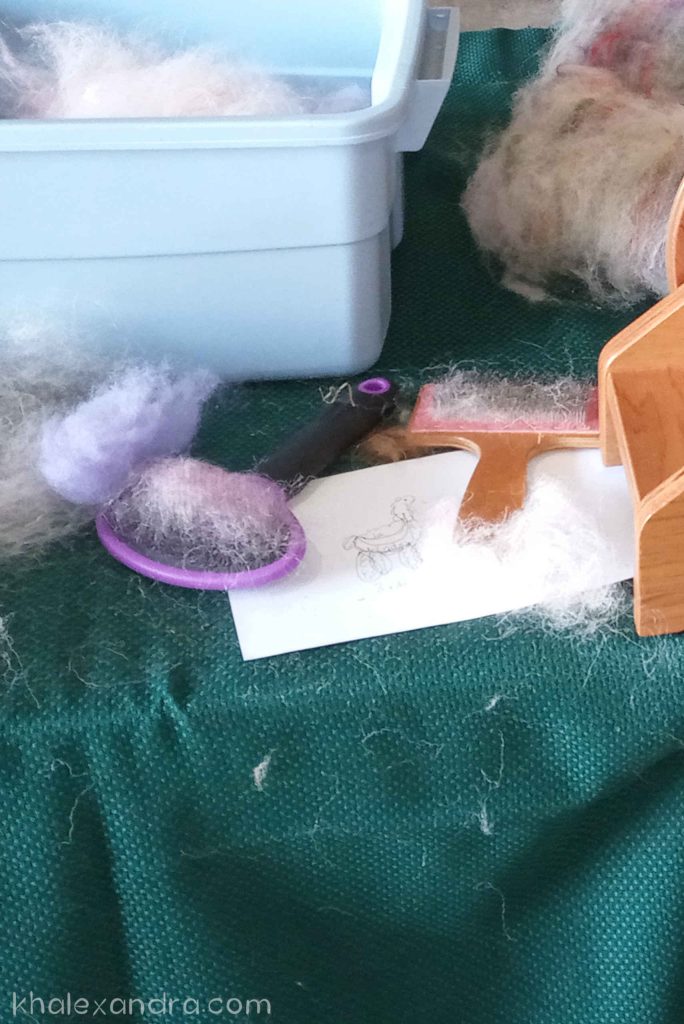
Or an even more efficient drumcarder like this:
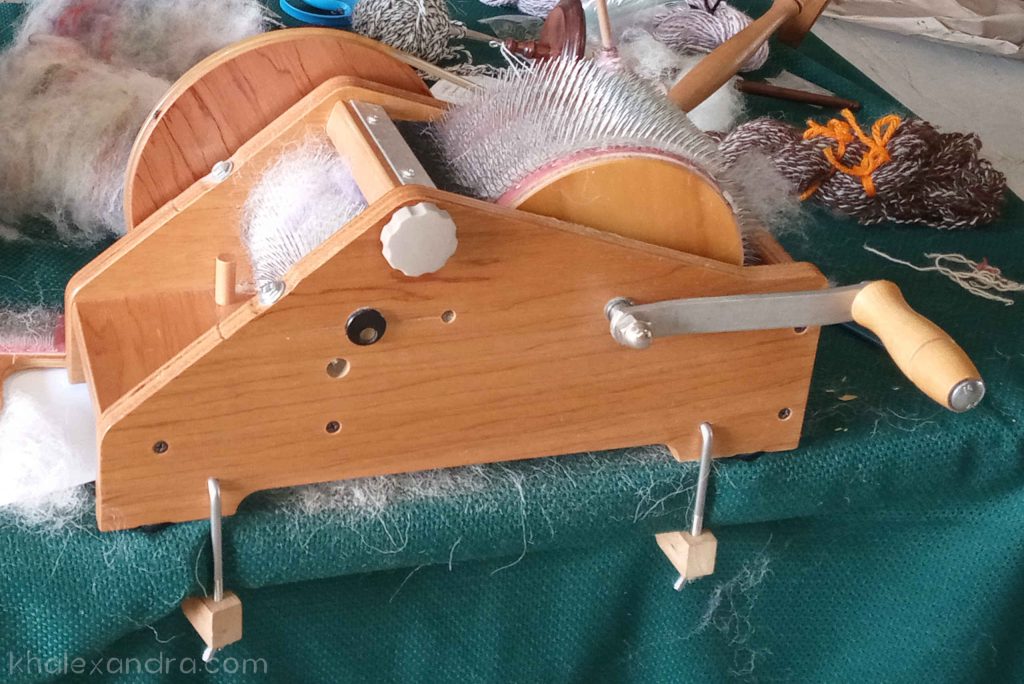
The point of the carding process is to separate the fibers and get out any clumps. After this, the fiber can be spun.
Alpaca fiber is spun with a drop, suspended, or supported spindle, or of course a wheel like this:
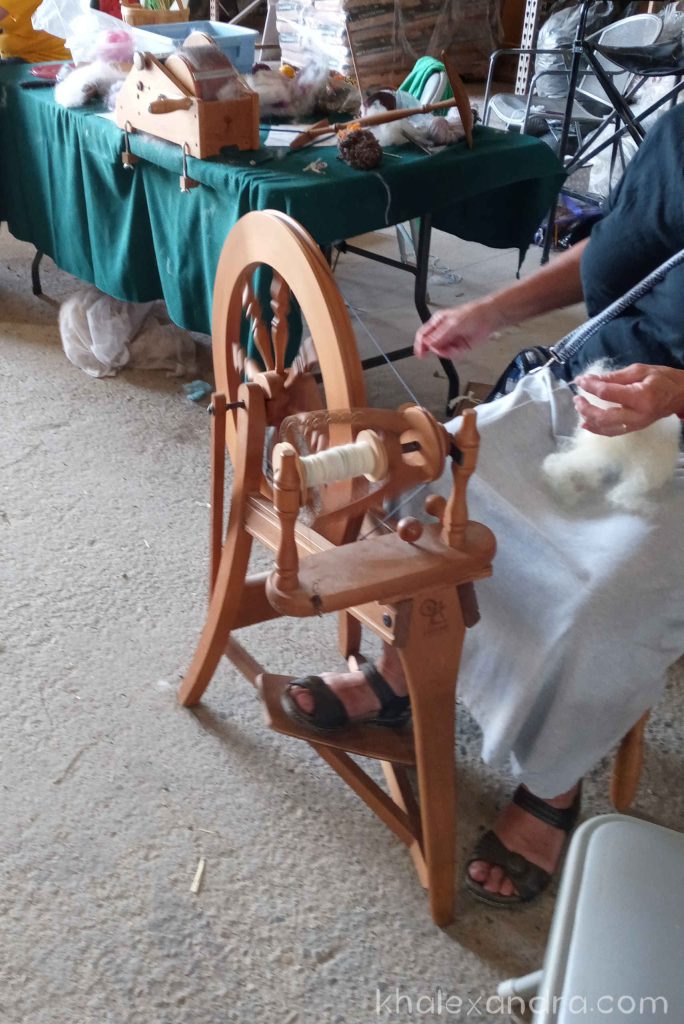
Starting an alpaca farm would be a wonderful idea, and very rewarding, too. If you like the idea of making your own products from alpaca fiber, you would most likely have many happy customers.
If you would like to buy beautiful alpaca products, you can find more here at PurelyAlpaca:
